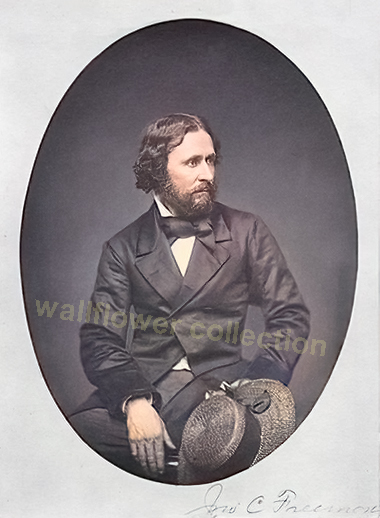So, this story takes place north of the Mojave. However, it is still relevant to John C Fremont’s 1843-44 survey expedition of the Mojave Desert and how he lost a cannon.

“Fremont’s Lost Cannon” refers to a historical incident involving John C. Frémont, an American explorer, military officer, and politician. During one of his expeditions in the 19th century, specifically the third expedition (1845-1846) aimed at mapping and exploring the Western United States, John C. Frémont brought along a cannon for defense purposes. This expedition was crucial in the context of the U.S. expansion westward, including the period of the Mexican-American War.
The story goes that while traversing challenging terrains, including the Rocky Mountains and the Sierra Nevada, Frémont’s party faced significant difficulties. The terrain and conditions were so harsh that the expedition had to abandon the cannon in the snow to save themselves and their other supplies. This occurred as they attempted to cross the Sierra Nevada during the winter, which was an extraordinarily difficult and risky endeavor then.

The exact location where the cannon was abandoned has been a subject of speculation and interest among historians and treasure hunters. Some attempts have been made to find the lost cannon, but as far as public records indicate, it remains lost to history. The story of Fremont’s lost cannon is often cited as an example of the challenges faced by early explorers of the American West and the lengths to which they went in their efforts to map the continent and secure it for future American settlement.
–
John C. Frémont, known for his exploration and mapping of the American West, did not explicitly have permission from the U.S. government to take a cannon on his expeditions. His expeditions, particularly the one in 1845-1846 leading into the beginning of the Mexican-American War, were officially for the purpose of mapping and exploration. However, the political and military context of the time suggests that his actions were not entirely outside the interests of the U.S. government.
Frémont was a lieutenant in the U.S. Army, and his expeditions were funded and supported by the government, specifically by the Corps of Topographical Engineers. The third expedition, which is often associated with the story of the lost cannon, was aimed at mapping the Oregon Trail and further exploring the Great Basin and California, which were not yet part of the United States but were of significant interest due to the manifest destiny ideology and tensions with Mexico.
Although there might not have been explicit permission for using a cannon, the military nature of his role and the implicit support of expansionist elements within the U.S. government suggests that his actions, including arming his expedition, aligned with broader U.S. interests in the region. Using a cannon could be considered a precautionary measure for defense against potential threats, considering the hostile territories they were exploring and the uncertain political situation with Mexico at the time.
Frémont’s expeditions, especially the third one, played a significant role in the U.S. expansion westward, contributing to the outbreak of the Mexican-American War and the eventual annexation of California and other territories to the United States. The ambiguity around permission for the cannon reflects the complex mix of exploration, military reconnaissance, and political maneuvering characteristic of U.S. westward expansion during that period.
–
Jessie Benton Frémont, the wife of John C. Frémont, played a significant role in her husband’s expeditions, including the suggestion to take a cannon on his third expedition. Jessie was supportive of her husband’s ventures and actively involved in planning and advocating for his work. She was the daughter of Senator Thomas Hart Benton of Missouri, a prominent advocate of westward expansion, which likely influenced her interest and involvement in her husband’s exploratory missions.
Jessie Benton Frémont was known to be a strong and intelligent woman who understood the political and military implications of her husband’s expeditions. Her suggestion to take a cannon along on the expedition can be seen as a strategic move, understanding the potential for conflict and the need for protection in the uncharted territories they were to explore. The cannon symbolized both a means of defense and a statement of American power and intent in the face of foreign claims to the territories of the West, especially with tensions rising between the United States and Mexico over territories such as California.

Her involvement went beyond mere suggestions; Jessie was instrumental in editing and preparing Frémont’s reports and writings for publication, helping to shape the narrative of his expeditions and the image of the American West in the minds of the U.S. public and policymakers. These reports played a significant role in drumming up support for westward expansion and contributed to the mythology of the American frontier.
Jessie Benton Frémont’s suggestion to take a cannon underscores her understanding of the complexities of the expedition, not only in terms of exploration but also in the context of national ambition and security.
